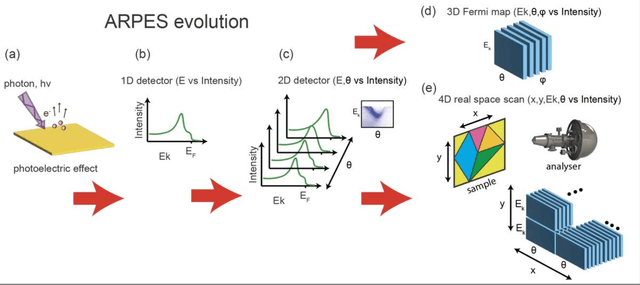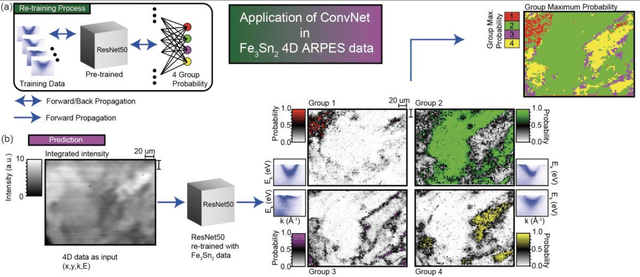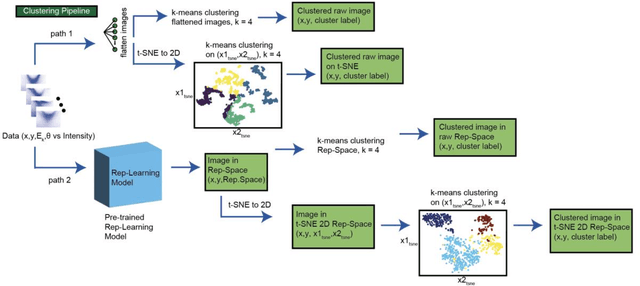Transfer Learning Application of Self-supervised Learning in ARPES
Paper and Code
Aug 23, 2022



Recent development in angle-resolved photoemission spectroscopy (ARPES) technique involves spatially resolving samples while maintaining the high-resolution feature of momentum space. This development easily expands the data size and its complexity for data analysis, where one of it is to label similar dispersion cuts and map them spatially. In this work, we demonstrate that the recent development in representational learning (self-supervised learning) model combined with k-means clustering can help automate that part of data analysis and save precious time, albeit with low performance. Finally, we introduce a few-shot learning (k-nearest neighbour or kNN) in representational space where we selectively choose one (k=1) image reference for each known label and subsequently label the rest of the data with respect to the nearest reference image. This last approach demonstrates the strength of the self-supervised learning to automate the image analysis in ARPES in particular and can be generalized into any science data analysis that heavily involves image data.
 Add to Chrome
Add to Chrome Add to Firefox
Add to Firefox Add to Edge
Add to Edge